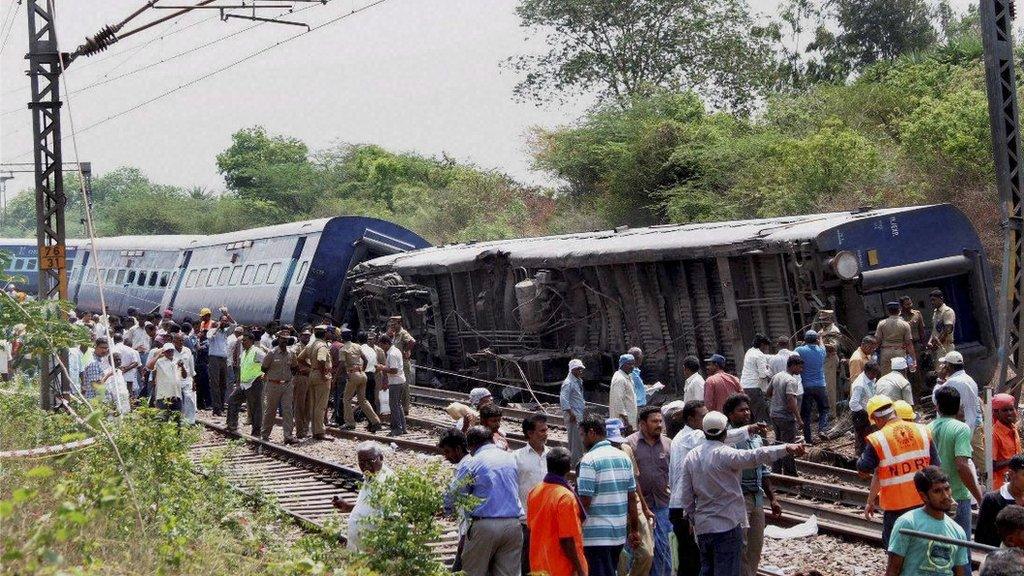The 'mobile gatekeepers' of India's railways
- Published
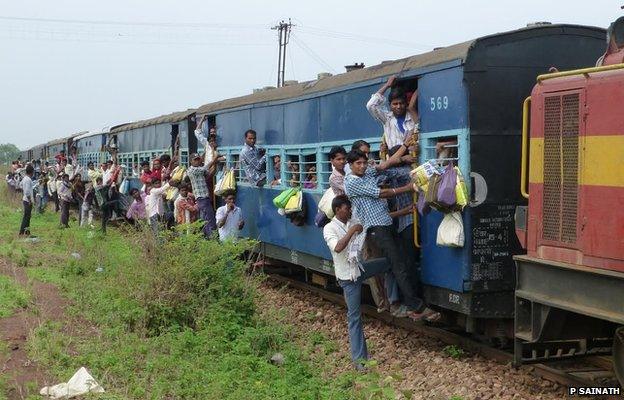
The slow narrow gauge train is better known as the 'labour train' for it ferries hundreds of migrant workers
When Kanhaiyalal Gupta jumped off from the engine driver's cabin with a pair of red and green flags in his hands, we got off the slowing train too.
We'd been waiting for that. What we did not expect was for him to shoot off across the next 200 metres like a sprinter. We ran behind him, stumbling on the uneven surface.
Mr Gupta darted towards an unmanned railway crossing and waving his red flag, quickly shut and locked the gate there. Then he turned towards the train and waved the green flag.
The train moved forward, passed the locked gate - and stopped again. Mr Gupta opened the gate and raced back to the driver's cabin, with us closely behind. He could do this up to 16 times over a distance of 68km (42 miles), on a one-way journey.
"It's what I do. I'm the mobile gatekeeper," he says.
Some 11,500 of the more than 30,000 railway crossings in India are unmanned. Nearly 40% of train-related accidents and two-thirds of deaths on railway tracks - usually happens when people are crossing them - take place at these unmanned crossings.
The railways' response has been to shut down as many unmanned crossings as it can rather than staff them with gatekeepers. Or to create 'mobile gatekeepers' like Mr Gupta to do the work of many.
'Enjoy my work'
We are travelling on the crowded Dhamtari passenger train in the central state of Chhattisgarh.
The slow narrow gauge train is better known as the "labour train" for it ferries hundreds of migrant workers from nearby villages to the state capital, Raipur, in search of work.
It's a nine-station journey from Dhamtari to Telibandha, the last narrow gauge stop in Raipur. Only two or three of some 19 railway gates on the route are manned.
"My job is to open and shut the gates. I enjoy my work," says Mr Gupta, who earns less than 20,000 rupees ($331; £205) a month.
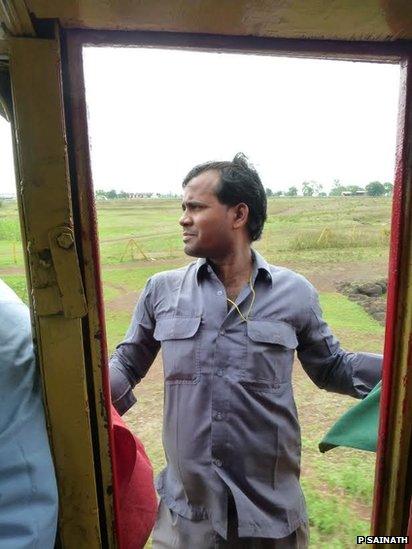
Kanhaiyalal Gupta says he loves his work
"Earlier there used to be permanent gatekeepers for these crossings, but now I have been appointed as the mobile gatekeeper. I used to lay and maintain railway tracks, but I was promoted to this position two years ago."
In the early stations on the route, a "mobile gatekeeper" can board one of the rear coaches after seeing the train through at one of the railway gates.
With the train yet to fill up, he can sit comfortably. As the train nears Raipur, though, he hasn't a chance of squeezing in. So he has to run up to the driver's cabin and stand there till the next railway gate.
India's state-run railways runs more than 12,000 trains, carrying some 23 million passengers daily.
Venu P Nair of the National Railway Mazdoor Union (NRMU), a union of railway workers, says the railways have a sanctioned strength of 1.3 million employees, but nearly 200,000 posts are lying vacant and no hiring is taking place though the number of trains has increased as have stations, booking counters and rail tracks.
The "mobile" role Mr Gupta has been given is a way of keeping recruitment down, unions say.
Migrant train
Back on the seven-coach "labour train", there are probably twice the number of passengers against its capacity of 400 commuters. They are hanging on at the sides, back and even in the spaces between coaches.
"You should see the train by the time we near Raipur," says one worker. "Then it gets full up at the top as well."
The passengers are entertained by the sight of the two of us, with video cameras, chasing after Mr Gupta at each unmanned railway crossing.
"It's a film shooting," declares one, wedged between two compartments. "They're from Bollywood."
"So who's the hero?" yells his companion.
"Never mind the damn hero," shouts a third. "Show us the heroine."
But they talk to us patiently at the stations.
Every passenger is a work-seeking migrant from the scores of villages in the region where farming is in a shambles.
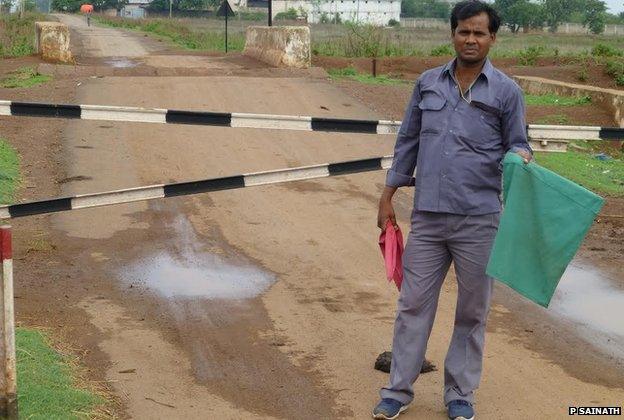
Kanhaiyalal Gupta used to maintain railway tracks in his previous job
Why take the train, we ask? With this sort of crowding, you must be exhausted by the time you reach Raipur?
"The train ticket from Dhamtari to Raipur costs just 20 rupees. The bus fare for the same route costs more than three times that. Journeying both ways by bus could cost more than half of our daily wages," says a passenger.
"In the morning train," says engine driver Venugopal, "the maximum passengers are labourers. People from the interior villages board this train and go to Raipur for daily wage work and return in the evening train every day."
"It's very hard," says Rohit Nawrangey, at the Kendri station.
He is a labourer who does that journey every now and then, despite owning a tiny bicycle repair shop in Kendri village. "You can't make enough here to survive," he says.
Mr Gupta, however, is totally focused on his work, readying for the next gate.
"Open and shut," he says, smiling.
P Sainath is an independent journalist and author of Everybody Loves A Good Drought
- Published8 July 2014
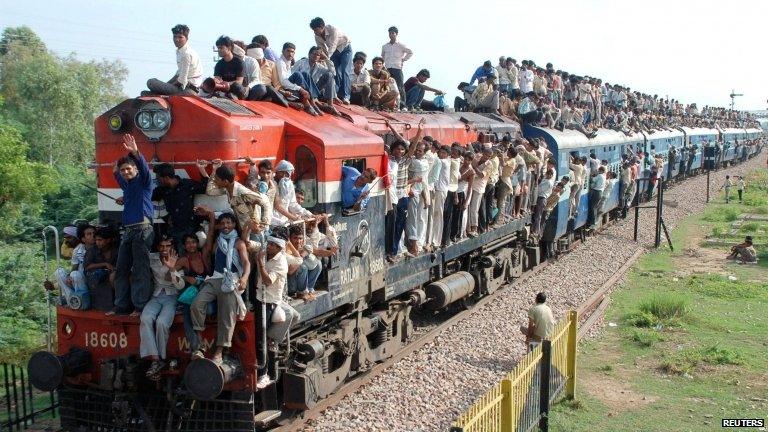
- Published19 July 2010
- Published10 April 2013
